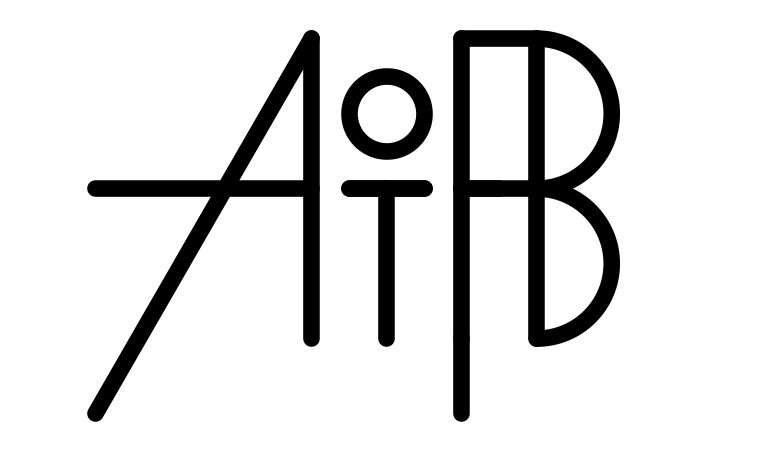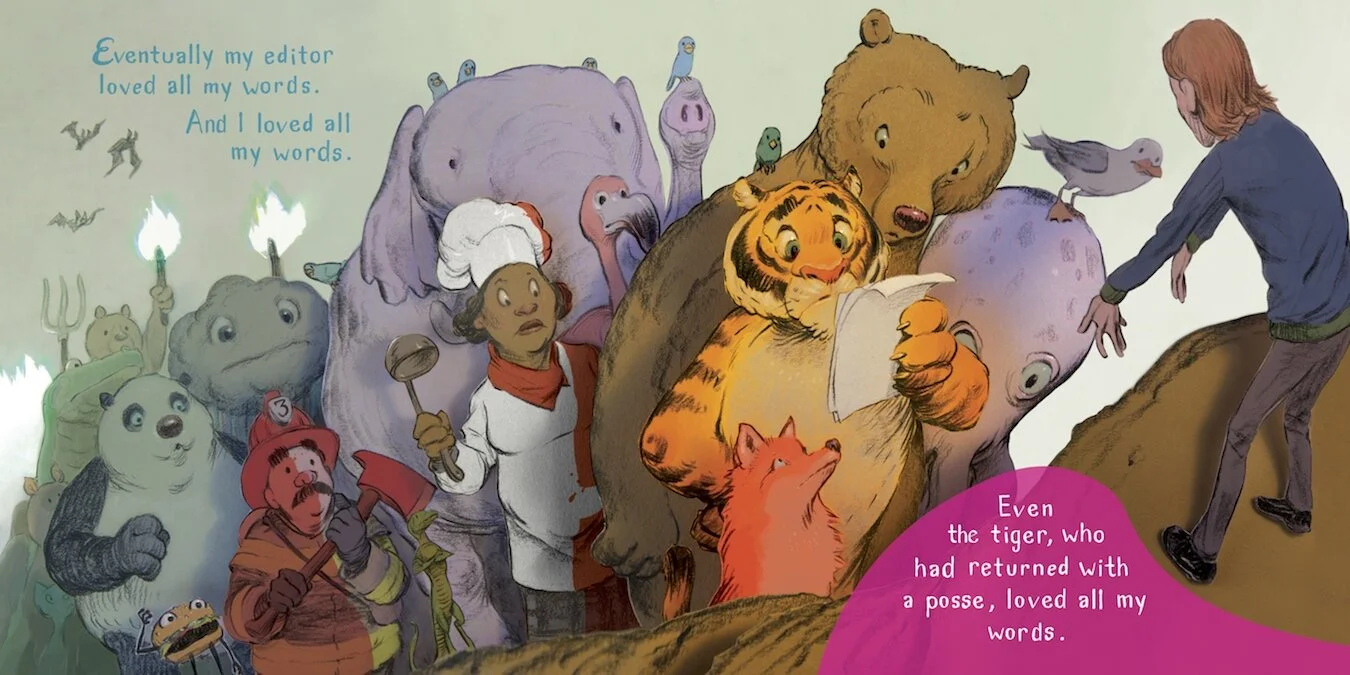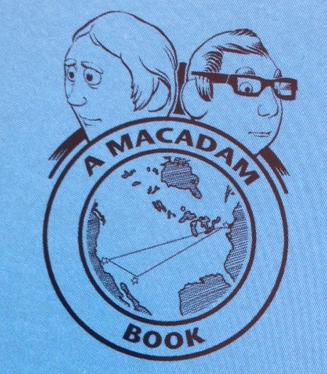An Interview with Adam Rex and Mac Barnett
We checked in with Adam Rex and Mac Barnett about their most recent collaboration on the book, How This Book Was Made.
Cover of How This Book Was Made, by Mac Barnett, illustration by Adam Rex
November 5, 2016
How This Book Was Made has a page in the back with a “A MACADAM BOOK” logo. We love the logo! Does this mean we can look forward to another collaboration soon?
Mac: That logo was something we first put in our last book together, Chloe and the Lion, and I think for us it signifies the fond feelings we have for each other and our collaborations. Adam has illustrated seven books I’ve written, including my first. And we’ve been friends now for about a decade. But your question brings me to a precipice: We have no future projects in the works. I’m crying now.
Adam: That’s weird, but I guess you’re right. I think this is the first time I haven’t been under contract to illustrate a Mac Barnett book since 2007.
Interior spread from How This Book Was Made, by Mac Barnett, illustration by Adam Mex
Adam, even though you first brought out the puppets you created for Chloe and the Lion, you said that your characters in this new book were different enough from those and therefore needed a fresh illustration approach. In what ways would you say your characters were different this time around?
Adam: I like the way the character of Adam Rex is essentially an obstacle in How This Book Was Made, a disingenuous loafer with a Buster Keaton-esque stone-faced affect.
Interior spread from How This Book Was Made, by Mac Barnett, illustration by Adam Mex
Adam, your talent and reputation have given you the privilege of experimenting with unique illustration styles. How did you develop this particular one? Is there one page spread that you feel particularly satisfied with, in the sense that it felt “inevitable” when you completed it?
Adam: I was scheduled to work on this book for kind of a long time before I actually started working on it, so I must have cycled through four or five distinct ideas about how I was going to render the final illustrations before I even started sketching. And then I still think I kind of made up the process as I was executing it, so nothing about this book ever felt inevitable. But eventually I landed on this idea to create and photograph what are basically cut paper dioramas, which I then lightly tinted in Photoshop. I’m really happy with the result and want to try it again, though I was surprised in some places with how everything turned out. There is one spread that I think looks less like a picture book and more like an ad for a bank that you’d pass on a moving walkway at the airport.
Interior spread from How This Book Was Made, by Mac Barnett, illustration by Adam Mex
Mac, you have mentioned that you feel it’s important to leave spaces in your text for Adam’s illustrations and ultimately even spaces for your readers to fill in with their imagination. That’s a challenging task for a writer of picture books. How do you rein in your words to allow for those important spaces?
Mac: Reining in suggests something subtractive, that I’m controlling prolix impulses, and I think that was true when I was first learning the form. I remember going through and deleting description from my first manuscript, Billy Twitters and His Blue Whale Problem. And sometimes I still remove lines of text once I see the book in sketches, and realize some bits are redundant. But in general when I’m writing, I feel like I’m building an architecture for the pictures, creating opportunities for the illustrations to do storytelling, and that feels constructive, not restrictive. Writing a picture book is the art of finishing an unfinished thing.
Interior spread from How This Book Was Made, by Mac Barnett, illustration by Adam Mex
Once again this book, like in Chloe and the Lion, eliminates the fourth wall and speaks directly to its readers. In what ways do you both feel this helps engage the readers of your books?
Mac: Well I’ve loved metafiction since I was a kid—The Monster at the End of this Book, the Looney Tunes short Duck Amuck. I think metafiction can be very inviting. It blurs the line between fiction and reality and puts the reader into the fantastic headspace where good reading occurs.
Adam: And I think in some sense that kids expect all fiction to break that fourth wall. The way they want to play through scenarios they find in books, and to tell their own mash-up stories about other people’s characters, tells me that they don’t see the same storytelling boundaries that we do as adults.
Thank you both!
For more on Adam Rex:
Interview with Mac Barnett and Jon Klassen
Interview with Mac Barnett and Isabelle Arsenault
All images used with permission from Mac Barnett and Adam Rex.







